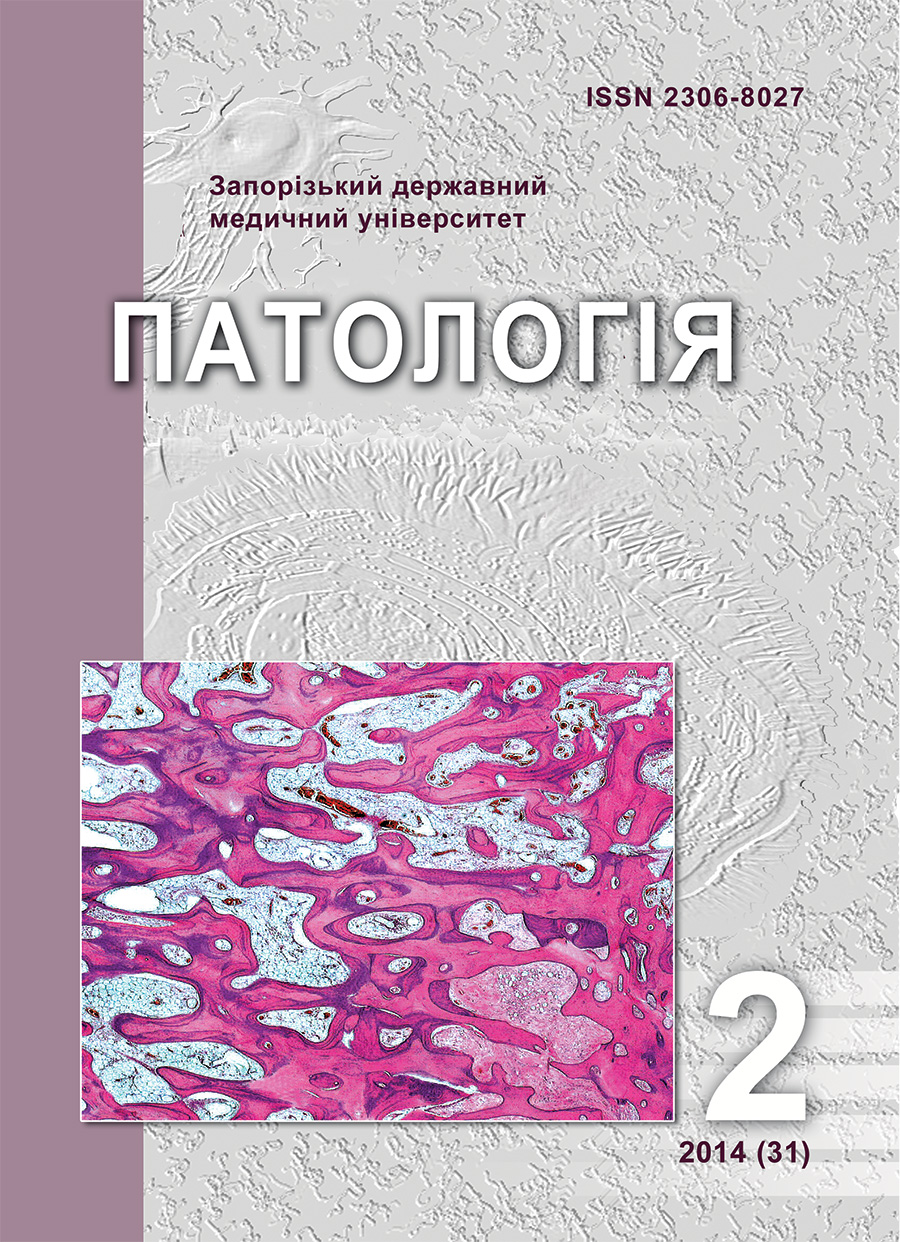Interrelation of galectin-3 and circulating proangiogenic endothelial cells in patients with ischemic chronic heart failure
DOI:
https://doi.org/10.14739/2310-1237.2014.2.28571Keywords:
Chronic Heart Failure, Circulating Endothelial Progenitor Cells, Galectin-3, Predictive ValueAbstract
Аim. Galectin-3 (Gal-3) is considered as a marker of nature progression of chronic heart failure (CHF) mediated cardiovascular remodelling. Progression of CHF associates with declining of circulating mononuclear progenitor cells (MPCs) in the peripheral circulation. the objective of this study was to evaluate the interrelationship between Gal-3 concentrations and proangiogenic MPCs in ischemic CHF patients.
Design and Methods. The study population was structured retrospectively after determining the coronary artery disease (CAD) in 126 subjects (54 male), aged 48 to 62 years, with mild-to-severe ischemic CHF. The flow cytometric technique was used for predictably distinguishing cell subsets that depend on the expression of CD14, CD34, Tie-2, CD45, and CD309 (VEGFR2). Circulating Gal-3 level and NT-pro-BNP level was determined by ELISA method.
Results. Elevated Gal-3 concentration more than 16.7 ng/ml associated with declined circulating MPCs. There was substantial negative effect of Gal-3 concentrations more than 16.7 ng/ml on circulating CD45+CD34+, CD45−CD34+, CD14+CD309+, CD14+CD309+Tie2+, and NT-pro-BNP plasma level.
Conclusion. Circulating level of MPCs progressively declines depending on the quartiles of Gal-3 concentration in CHF subjects.
References
Akhmedov, A. T., & Marín-García, J. (2013) Myocardial regeneration of the failing heart. Heart Fail Rev., 18(6), 815–833. doi: 10.1007/s10741-012-9348-5.
Bakogiannis, C., Antoniades, C., Tousoulis, D., Stefanadis, C., Latsios, G., Siasos, G., et al. (2012). Circulating Endothelial Progenitor Cells as Biomarkers for Prediction of Cardiovascular Outcomes. Current Medicinal Chemistry, 19(16), 2597–2604.
Cheng, J. M., Akkerhuis, K. M., Battes, L. C., Vark, L. C., Hillege, H. L., Paulus, W. J., et al. (2013). Biomarkers of heart failure with normal ejection fraction: a systematic review. European Journal of Heart Failure, 15(12), 1350–1362.
De Boer, R. A, Voors, A. A, Muntendam, P, van Gilst, W. H, van Veldhuisen, D. J. (2009) Galectin-3: a novel mediator of heart failure development and progression. Eur J Heart Fail., 11, 811–817.
Fadini, G. P., Maruyama, S., Ozaki, T., et al. (2010) Circulating progenitor cell count for cardiovascular risk stratification: a pooled analysis. PLoS ONE, 5, e11488.
Fritzenwanger, M., Lorenz, F., Jung, C., et al. (2009) Differential number of cd34+, cd133+ and cd34+/cd133+ cells in peripheral blood of patients with congestive heart failure. Eur J Med Res, 14, 113–117. doi: 10.1186/2047-783X-14-3-113.
Hartupee, J, & Mann, D. L. (2013) Positioning of Inflammatory Biomarkers in the Heart Failure Landscape. J Cardiovasc Transl Res, 6(4), 485–492. doi: 10.1007/s12265-013-9467-y.
McMurray, J. J. V., Adamopoulos, S., Anker, S. D., et al. (2012) ESC Guidelines for the diagnosis and treatment of acute and chronic heart failure 2012. Eur Heart J., 33, 1787–1847. doi: 10.1093/eurheartj/ehs104.
Wang, C., Lee, Y., Lin, S., Mei, H., Lin, S., Liu, M., et al. (2012). Surface Markers of Heterogeneous Peripheral Blood-Derived Smooth Muscle Progenitor Cells.Arteriosclerosis, Thrombosis, and Vascular Biology, 32(8), 1875–1883.
Yang, R. Y., Rabinovich, G. A., Liu, F. T. (2008) Galectins: Structure, 3. function and therapeutic potential. Expert Rev Mol Med., 13, e17–39.
Downloads
How to Cite
Issue
Section
License
Authors who publish with this journal agree to the following terms:
Authors retain copyright and grant the journal right of first publication with the work simultaneously licensed under a Creative Commons Attribution License that allows others to share the work with an acknowledgement of the work's authorship and initial publication in this journal.

Authors are able to enter into separate, additional contractual arrangements for the non-exclusive distribution of the journal's published version of the work (e.g., post it to an institutional repository or publish it in a book), with an acknowledgement of its initial publication in this journal.
Authors are permitted and encouraged to post their work online (e.g., in institutional repositories or on their website) prior to and during the submission process, as it can lead to productive exchanges, as well as earlier and greater citation of published work (SeeThe Effect of Open Access).

